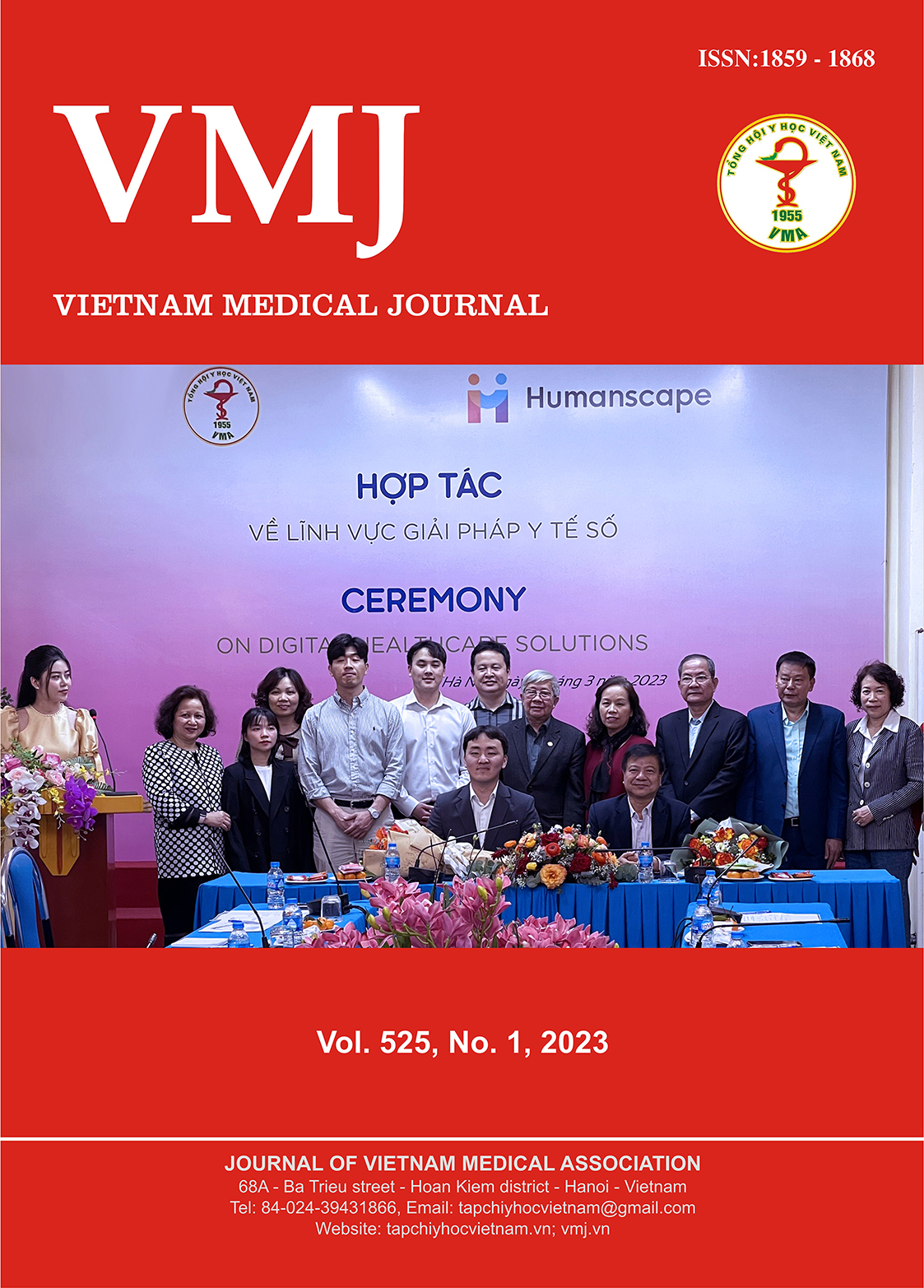EVALUATION THE RESULTS OF PHAKIC ICL SURGERY AFTER ONE MONTH IN 23 PATIENTS AT SAIGON - CAN THO EYE HOSPITAL FROM JULY 2020 TO DECEMBER 2021
Nội dung chính của bài viết
Tóm tắt
Objectives: To evaluate the results of Phakic ICL surgery after one month at Saigon Can Tho Eye Hospital. Subjects and methods: A retrospective descriptive study evaluated one-month results in 45 eyes of 23 patients undergoing Phakic ICL surgery with Visian Staar Lens of Staar Surgical Company, from July 2020 to December 2021. Ocular biometry was evaluated using the Anterior Chamber Depth index (ACD), the White-to-White measurement (WTW), and the Vault index. Patient satisfaction was evaluated using a visual analogue scale ranging from 0 (very dissatisfied) to 10 (very satisfied). Results: The pre- and postoperative equivalent sphericalness were: -9.26 ± 2.91 (-16 to -3.75) and -1.15 ± 1.06, respectively, which was statistically significant (P<0.0001). The number of incremental postoperative glassless visual rows after 1-week and 1-month surgery were 7.16 and 7.25 rows, respectively. Patient satisfaction was 96%. No postoperative complication was reported. Conclusions: Phakic ICL surgery is highly effectively, safely, and accurately in treatment of refractive errors, including nearsightedness and astigmatism, which results in very good vision after surgery. Patient satisfaction was very high (96%). Phakic ICL could minimize postoperative dry eyes. The techinique is simple and quick technique with simple postoperative care but requires high precision.
Chi tiết bài viết
Từ khóa
Phakic ICL, refractive errors, cataracts.
Tài liệu tham khảo
2. Arturo GB, Martha J, Enrique OG Hernandez, Tito RL, Arturo RM, Alerjandro N (2014). Long - term refractive outcomes of posterior chamber phakic ( spheric and toric implantable collamer lens) intra ocular lens implantation. Int Ophthalmol 34, pp. 583-590.
3. Brien A Holden (2016), Global prevalence of myopia and high myopia and temporal trends from 2000 through 2050. American Academy of Ophthalmology 2016;123:1036-1042; http://creativecommons.org/licenses/by-nc-nd/4.0/.
4. Chen, X., Wang, X., Xu, Y., Cheng, M., Han, T., Wang, X., & Zhou, X. (2022). Long-term comparison of vault and complications of implantable collamer lens with and without a central hole for high myopia correction: 5 years. Current Eye Research, 47(4), pp. 540-546.
5. Denniston Alastair; Murray; Philip (2018), Oxford Handbook of Ophthalmology (4 ed.), OUP Oxford, pp.926.
6. Foster; Jiang PJ; Y (2014), Epidemiology of myopia, Eye (London, England). 28(2), pp.202–208.
7. Hassan Hashemi, Akbar Fotouhi, Abbasali Yekta, Reza Pakzad, Hadi Ostadimoghaddam , and Mehdi Khabazkhoob (2018). Global and regional estimates of prevalence of refractive errors: Systematic review and meta-analysis. J Curr Ophthalmol. 2018 Mar; 30(1): 3–22. https://www.ncbi.nlm.nih.gov/pmc/articles/PMC5859285/
8. K Kamiya, K Shimizu, A Igarashi, D Aizawa and T Ikeda (2010). Clinical outcomes and patient satisfaction after Visian Implantable Collamer Lens removal and phacoemulsification with intraocular lens implantation in eyes with induced cataract. Eye (2010) 24,304–309; DOI:10.1038/eye.2009.87; published online 24 April 2009
9. Shin, J. Y., Lee, J. B., Seo, K. Y., Kim, E. K., & Kim, I. (2013). Comparison of Preoperative and Postoperative Ocular Biometry in Eyes with Phakic Intraocular Lens Implantations. Yonsei Medical Journal, 54(5), 1259-1265. https://doi.org/10.3349/ymj.2013.54.5.1259
10. Staar Surgical (2005). STAAR Surgical's VISIAN ICL(TM) Receives FDA Approval.https://www.staar.com/news/2005/staar-surgicals-visian-icltm-receives-fda-approval.
11. General Statistics Office, Ministry of Planning & Investment (2022). Mekong Delta: Stand firm in the face of new opportunities and new opportunities. 8/9/2022. Macroeconomic page; https://consosukien.vn/do-ng-ba-ng-song-cu-u-long-vu-ng-buoc-truoc-tho-i-co-moi-va-va-n-ho-i-moi-thang-8-2022.htm
12. Thuy, Nguyen Thanh (2015), Study on the long-term effects of artificial lens placement on the eyes and lens bodies for the treatment of severe myopia, Doctoral Thesis in Medicine, Hanoi Medical University.
13. United States Food and Drug Administration (2005). Summary of Safety and Effectiveness Data. STAAR Vision ICL (Implantable Collamer Lens). PMA: P030016.
14. Wang, X., & Zhou, X. (2016). Update on treating high myopia with implantable collamer lenses. The Asia-Pacific Journal of Ophthalmology, 5(6), pp. 445-449.
15. Zhao, W., Zhao, J., Han, T., Wang, J., Zhang, Z., & Zhou, X. (2022). A comprehensive investigation of contrast sensitivity and disk halo in high myopia treated With SMILE and EVO implantable collamer lens implantation. Translational Vision Science & Technology, 11(4), pp. 23-23.


